
By Leg 2 Participants, Cuba’s Twilight Zone Reefs Expedition
June 5, 2017
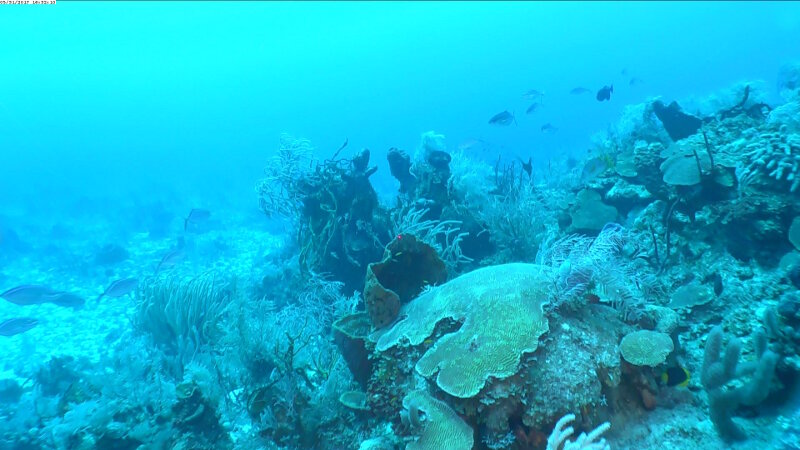
Silvertown Bank, a plateau similar to San Antonio Bank that we visited in Leg 1, had a high diversity and abundance of fishes in the upper mesophotic zone than at other sites we visited along the southern coast of Cuba. Image courtesy of Cuba’s Twilight Zone Reefs and Their Regional Connectivity. Download larger version (jpg, 412 KB).
Five days have passed since we left the port of Cienfuegos, exchanged portions of the scientific team, and started our 1,000-mile journey. The Cuba’s Twilight Zone Reefs team first explored three locations seaward from the “Golfo de Ana Maria" and the “Gulf of Guacanayabo,” where we continued to encounter deep walls that went straight into the deep mesophotic zone.
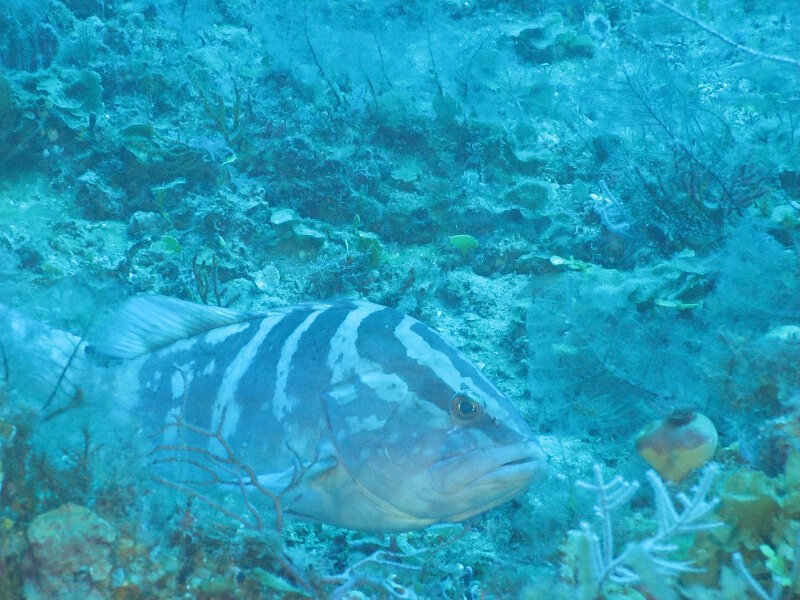
The Nassau grouper (Epinephelus striatus) was historically important to U.S. and Caribbean commercial fisheries, but has been endangered by overfishing. We saw this species at multiple sites along the southern coast of Cuba. Image courtesy of Cuba’s Twilight Zone Reefs and Their Regional Connectivity. Download larger version (jpg, 428 KB).
First, we explored Silvertown Bank, a plateau similar to San Antonio Bank, which we dove at two locations. Its upper mesophotic zone had great diversity and abundance of fishes, among them, parrot fish rarely detected at other sites. Gardens of octocorals predominated the upper mesophotic in this unique marine bank.
Eighty miles east, Cayo Caballones and Cayo Anclitas, were our next dive sites in Los Jardines de la Reina National Park. This national park is famous for its shark sightings and the great size of groupers and snappers. However, we did not see sharks on our remotely operated vehicle dive, except for a sleepy nurse shark in the upper mesophotic. Here the team started to make snorkeling trips to shallow reefs, where we encountered different species and corals up to three meters wide.
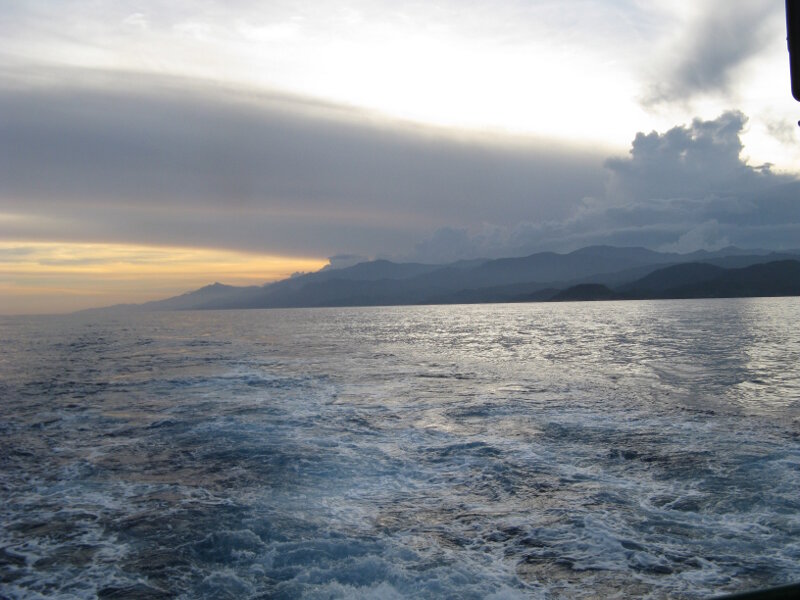
Sierra Maestra is a mountain range that runs along the coast in southeast Cuba, rising abruptly from the sea. We expected these emergent marine terraces to run all the way down to the Cayman Trench. Instead, a sandy or muddy bottom with coral rock gently ran to 170 meters deep. Image courtesy of Cuba’s Twilight Zone Reefs and Their Regional Connectivity. Download larger version (jpg, 1.8 MB).
Leaving Jardines de La Reina, we were in awe with the massive mountain ranges of the Sierra Maestra. Unexpectedly, right after the easternmost tip of the Gulf of Guacanayabo in Cabo Cruz (National Park Desembarco del Granma), and in the next two southern locations (Chivirico and Punta Imias), the bottom profile was quite different. Instead, a steep wall from 40-50 meters deep, there was a gentle slope (30-45°), mingled with rocky walls. The highest mountain ranges of the island of Cuba, and impressive 10-story cliffs line the shore from Cabo Cruz to Punta Imias. We expected these emerged marine terraces to run all the way down to the Cayman Trench. Instead a sandy, or muddy, bottom, with coral rock gently ran to 170 meters deep.
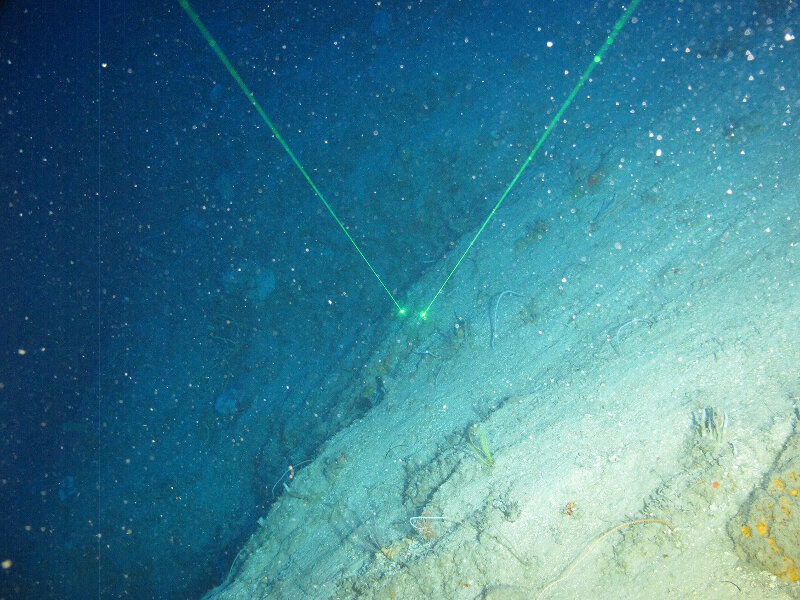
Unlike the steep walls that we had seen at most previous sites, there was a gentle slope (30-45º) at most of our dive sites along the southeastern coast. Image courtesy of Cuba’s Twilight Zone Reefs and Their Regional Connectivity. Download larger version (jpg, 580 KB).
These more gentle, and somewhat muddy bottoms, had a different faunal composition in the deep mesophotic zone. Large cups, ramose, spherical, and small barrel sponges, anthipatarians, and soft corals were abundant at these depths. At Punta Chimirico, large white thinly branching coral colonies, probably of the genus Madracis, grew abundantly on the wall at 135 meters. Some typical sponges like the short and stout Xestospongia sp. were present. Yellow crust sponges were persistent at all sites. The largest fan-shaped sponges occurred in the South at depths between 100-125 meters. These gentle slopes combined rocky and reef substrate with sandy bottoms, and we encoutered evidence of sand avalanches.
With respect to algae, the clear species zonation observed in Leg 1 of this cruise was maintained until our last site in the South, Punta Imias. There the zonation was less pronounced, and there was a decrease in species abundance, but there were different species that dominated. For example, the brown alga Lobophora sp. became a dominant space occupier in the upper mesophotic zone across all this region, probably as a consequence of nutrients leaching from the mountainous terrain. In the upper mesophotic zone, Lion Fish were observed at all sites with the deepest record of 150 meters recorded at Cabo Cruz.
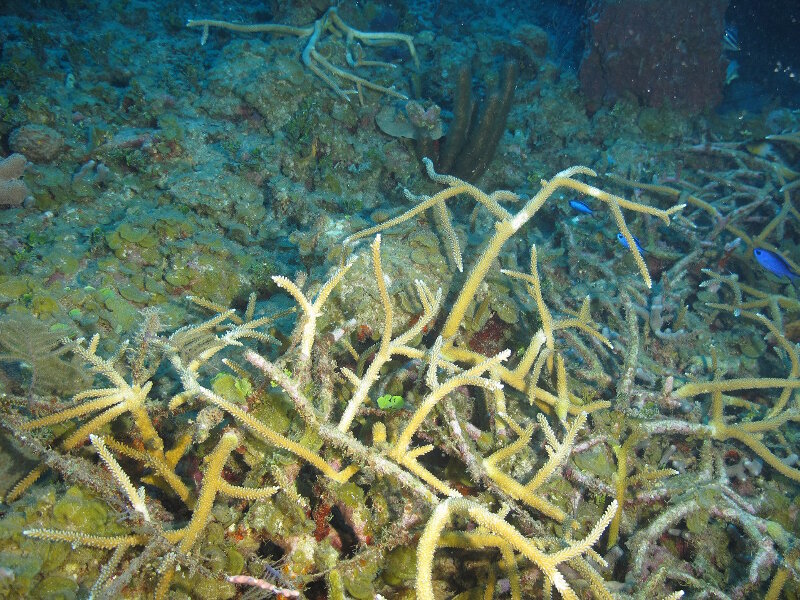
The staghorn coral (Acropora cervicornis) was once one of the most important Caribbean corals in terms of its contribution to reef growth and fishery habitat, but in the 1980’s its populations collapsed throughout Florida and the Caribbean due primarily to disease (usually White band disease). We saw several healthy stands in our dives along the southern coast of Cuba. Image courtesy of Cuba’s Twilight Zone Reefs and Their Regional Connectivity. Download larger version (jpg, 621 KB).
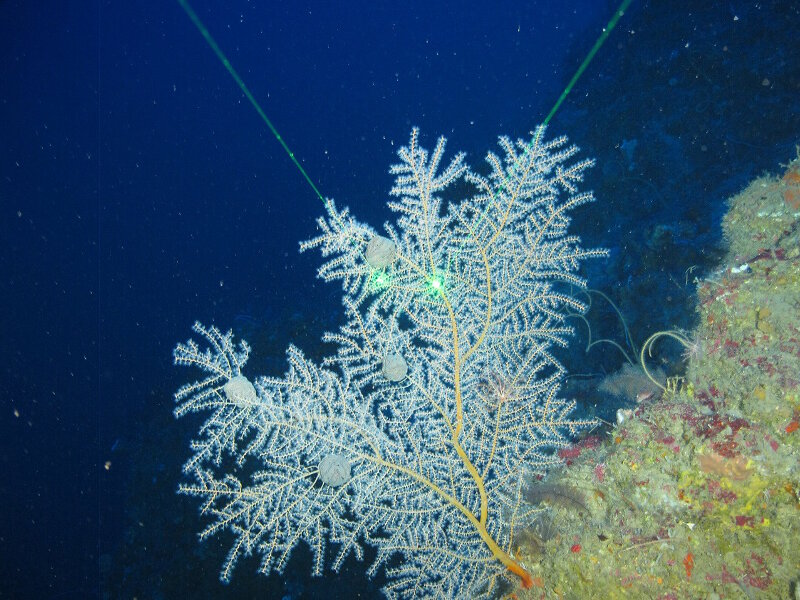
We saw the gorgonian Swiftia exerta along the walls on several dives, sometimes with balled-up basket stars living on them. Image courtesy of Cuba’s Twilight Zone Reefs and Their Regional Connectivity. Download larger version (jpg, 477 KB).